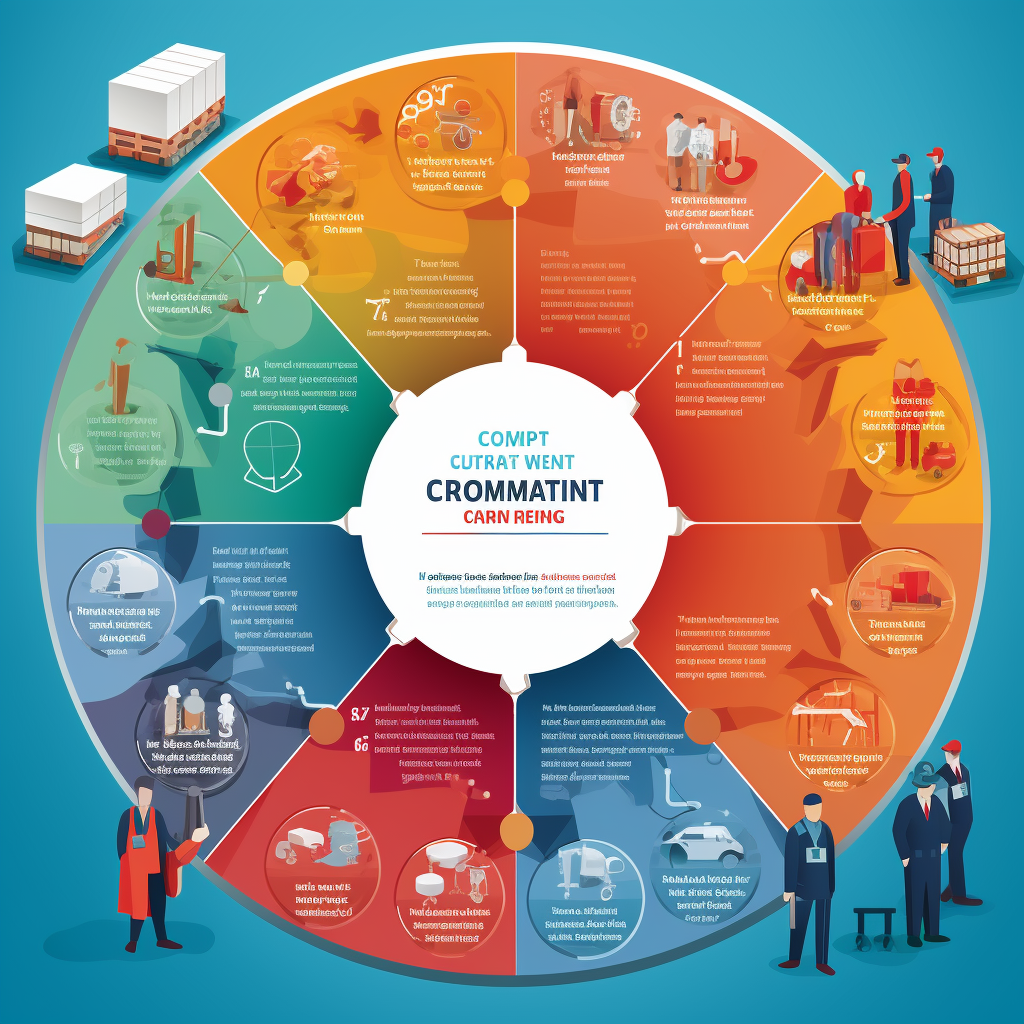Chilled Innovations: Transforming Cold Chain Logistics
Are you aware that one out of four products in the food industry requires cold chain logistics?
Chilled innovations are transforming the industry, enabling the storage and delivery of temperature-sensitive goods with increased traceability, automation, and cost savings.
Read on to learn how these advances are revolutionizing the cold chain logistics industry.
Temperature-Sensitive Goods
When it comes to temperature-sensitive goods, proper handling and storage is essential. From food to pharmaceuticals, many items can be damaged when exposed to heat. That’s why the cold chain is so important.
This network of storage and transportation ensures products are kept at the optimal temperature throughout the entire process. But it’s not just about keeping products cool. Cold chain logistics also involve tracking, documentation, and forecasting.
It’s a complex system that must be constantly monitored to ensure that goods remain in perfect condition. To stay competitive, companies must utilize the latest technologies to streamline their cold chain operations and maximize efficiency.
Storage Solutions
Building on effective temperature control, and storage solutions are key to effectively managing a cold chain system. Modern storage solutions must be flexible and adaptable to accommodate different types of goods and materials. For example, insulated containers come in various shapes and sizes and are designed to keep contents within a specific temperature range.
Refrigerated warehouses are an important part of any cold chain, providing the necessary environment for goods to remain fresh. The latest technologies, such as automated humidity and temperature control, are essential for maintaining optimal storage conditions. Additionally, the use of RFID and barcode scanning can help streamline inventory management.
With the right storage solutions, cold chain logistics can be effectively managed, ensuring the safe and timely delivery of temperature-sensitive goods.

Delivery Methods
Once we’ve the optimal storage conditions in place, the next step is to think about delivery methods for getting the goods to their final destination.
Cold chain logistics involves utilizing a variety of delivery methods such as refrigerated trucks, sea containers, and air freight, to ensure that the products retain their desired freshness and quality for the consumer.
Refrigerated trucks are one of the most commonly used methods, especially for short-distance delivery. They’re cost-efficient and offer reliable temperature control for transporting goods.
Sea containers are ideal for long-distance transportation and are usually the most cost-effective option for international shipments.
Air freight is the most reliable and fastest option, but also the most expensive. It’s essential to choose the best delivery method for each shipment, based on cost, reliability, and distance.
Innovations in cold chain logistics are transforming the way food and other products are shipped around the world.
Automation Advantages
And while automation offers many advantages, such as increased efficiency and accuracy, it’s important to consider the cost associated with automation as well. Unquestionably, there are certain benefits to automating cold chain logistics:
- Improved tracking and traceability
- Reduction of manual labor
- Increased visibility and transparency
- Reduced paperwork and costs
- Faster and more reliable delivery
Automation can also reduce human error, which is especially crucial as the food industry is becoming increasingly regulated. Automation can also help to reduce costs associated with human labor and ensure that products are stored in the right conditions, which can help to extend the shelf life of the products.
Ultimately, automation can help to streamline the cold chain process, which can lead to better customer satisfaction and an improved bottom line.
Traceability Benefits
By combining automation and traceability, cold chain logistics can benefit from improved tracking and visibility, allowing for greater accuracy and reliability. This allows companies to trace the product from its origin to its destination, ensuring its safety and integrity.
Traceability also provides better inventory management, as companies can quickly identify and locate products as needed. Additionally, real-time tracking with traceability enables companies to respond to customer inquiries quickly and accurately.
Moreover, with traceability, companies can easily identify and address any issues along the supply chain, allowing them to proactively prevent problems before they arise.
Cost Savings
The improved traceability resulting from automation and traceability also provides cost savings to companies, as it improves inventory management and reduces the need for manual labor. There are many ways that companies can benefit from cold chain logistics cost savings, such as:
- Automating purchasing and inventory processes
- Utilizing predictive analytics for demand forecasting
- Reducing waste by relying on data-driven decision making
- Relocating distribution centers in strategic areas to reduce transportation costs
- Leveraging existing technology to streamline processes and improve efficiency
Industry Impact
Besides the cost savings, the automation and traceability of cold chain logistics has also had a significant impact on the industry. It’s improved accuracy by providing near-real-time data, which enables companies to accurately monitor the temperature and location of goods in transit. This gives them the ability to quickly identify and address any problems that may arise, thus ensuring goods arrive in the best condition.
Furthermore, automated cold chain logistics has led to improved efficiency and cost-effectiveness, reducing the need for manual labor and speeding up the delivery process. As a result, companies can now deliver goods faster, while also saving money.
All of this has had a tremendous impact on the cold chain logistics industry and will continue to do so for years to come.
Conclusion
You’ve seen how chilled innovations are transforming cold chain logistics, from storage solutions and delivery methods to automation advantages and cost savings.
It’s clear that this technology is revolutionizing the industry, with a projected growth rate of nearly 8% over the next five years.
So don’t get left behind: join the revolution that’s making the cold chain safer, more efficient, and more cost effective for everyone.










Post Comment